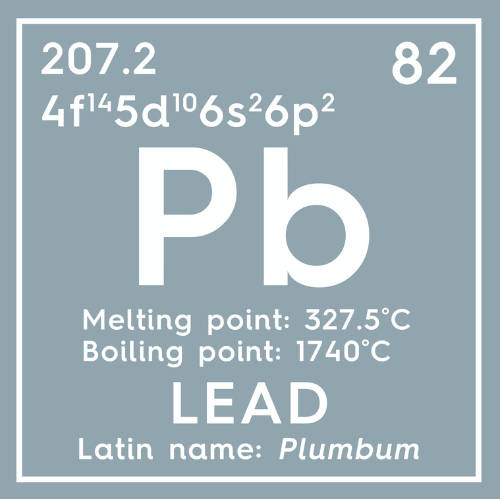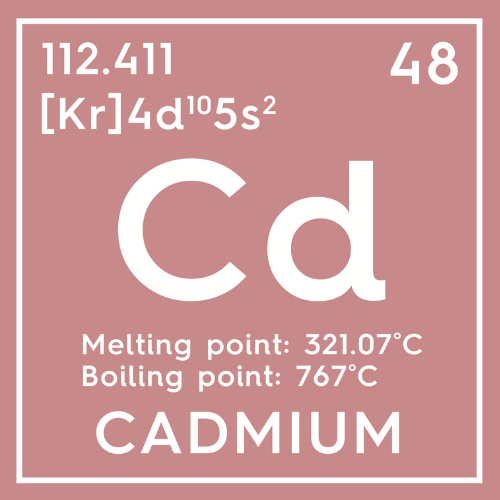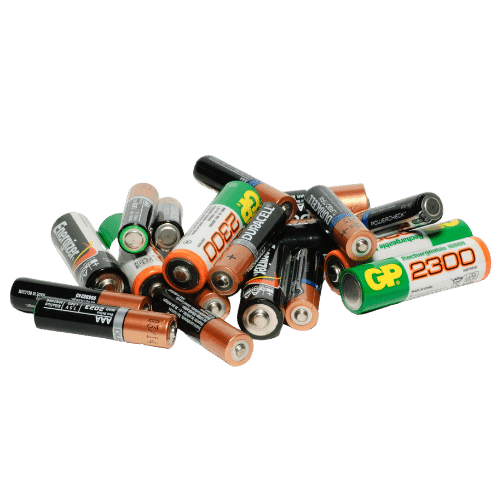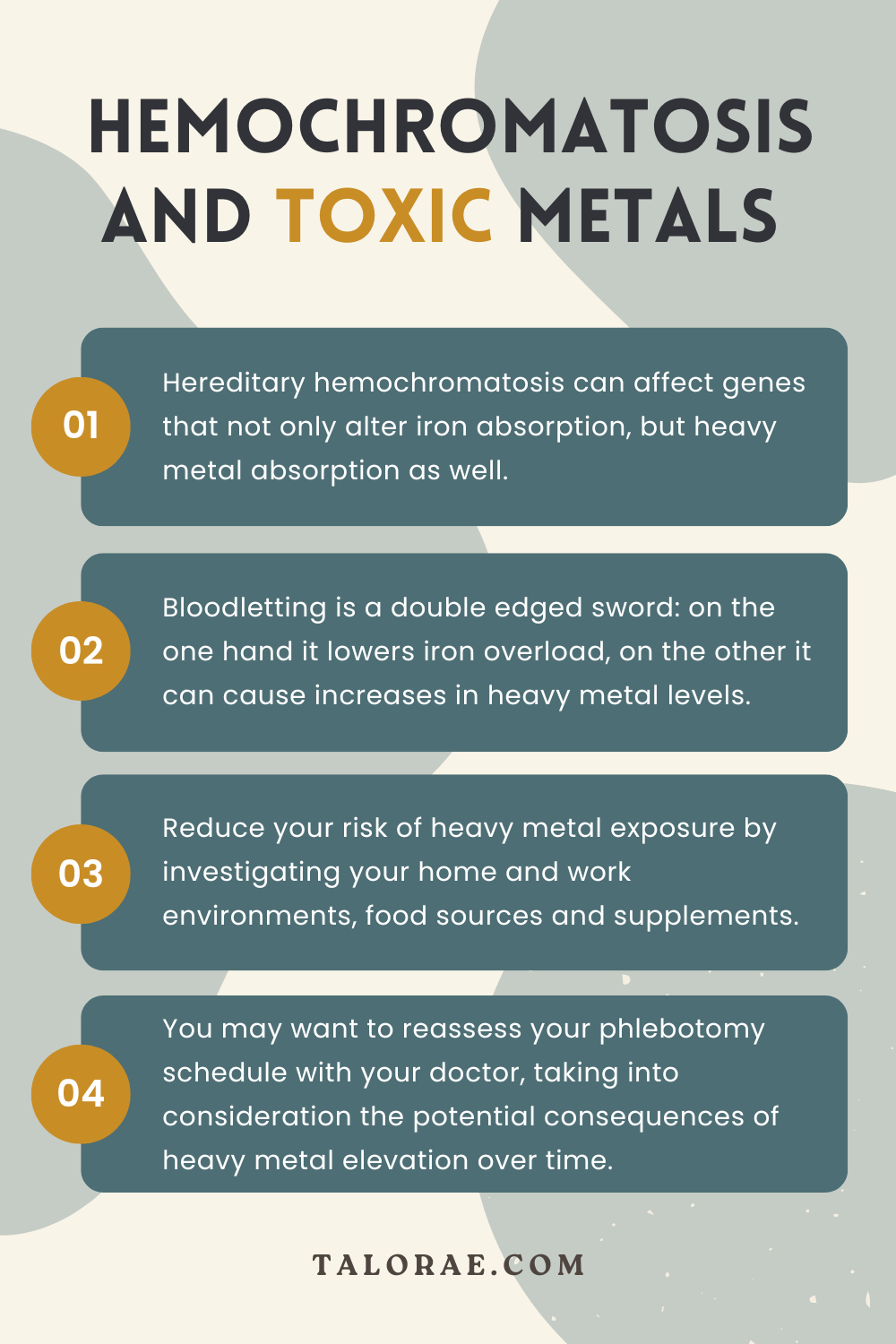Heads up! I’m NOT a doctor or nutritionist. I’m not giving you any medical, dietary, or professional advice or treatment here. Check with your doctor before you make any changes to your lifestyle or diet.
Just how manageable is hemochromatosis? It’s a condition without a cure, and at this point, really all we can do is simply that, attempt to “manage it.”
Bloodletting combined with dietary changes is the current treatment plan handed out by most doctors. Because neither of those things sound too outrageous, some people in your life may think that hemochromatosis is ‘easy’ to deal with. As long as you get regular phlebotomies and don’t eat steak every night for dinner, “you should be fine.”
In my personal experience, I still encounter days when I don’t feel “fine” and I find myself dealing with brain fog, tiredness, stomach aches, weakness, tingling, joint pain, and overall malaise. I’ve noticed how my wrists and fingers can ache in between bloodlettings. I can’t help but wonder why this happens and how these occurrences could be affecting me long-term. It seems to me that hemochromatosis is not so simple and straightforward as bloodletting and cutting down on steak nights.
As I’ve dug into my recurring symptoms and researched why this might be for me, one of the most compelling facts that I’ve learned so far is this: The genes that trigger excessive iron absorption also influence the modulation of heavy metals in the body. People with hemochromatosis not only absorb more iron than the average person, they can also absorb more heavy metals, including lead and cadmium.
Even if your iron levels are within the normal limits, you’ll want to consider your heavy metal exposure. This may be especially true if you notice that you’re still feeling “sick” despite your ‘well-managed’ iron overload.
LEAD
Most notably, there’s a relationship between hereditary hemochromatosis and rising lead quantities in the body.
Here’s what the science is saying about the links between lead and hereditary hemochromatosis:
Regardless of whether you have 1 copy of a mutated HFE gene or 2 copies, both “homozygotes and heterozygotes absorb increased quantities of lead.” Homozygotes (people with 2 copies) absorb more lead than heterozygotes (people with 1 copy).

The body’s mismanagement of iron absorption in individuals with hereditary hemochromatosis is accompanied by “malregulation of lead absorption, and that the absorptive pathway for these two metals may be the same.” The working theory is that lead is absorbed in an identical fashion to how iron is absorbed – both iron and lead attach to the same proteins. So it follows that the tendency to bind to more iron coincides with a similar lead-binding capacity.
As “one of the most dangerous environmental toxic substances,” even tiny amounts of lead can cause headaches, stomach pain, constipation, muscle and joint pain, sleep problems, fatigue, irritability, and loss of sex drive. Lead build-up can eventually result in serious health problems including high blood pressure, cardiovascular disease, miscarriages, and nerve damage if not treated according to the Mayo Clinic.
CADMIUM
Cadmium is another toxic heavy metal with ties to hemochromatosis. Evidence links high cadmium levels to those of us with this genetic condition, and more specifically, cadmium amounts increase in those who receive more phlebotomies (more info on this below).
Cadmium can give you flu-like symptoms, such as aches and chills, as well as stomach pain, shortness of breath, diarrhea, and vomiting. Cadmium is a cancer-causing agent, and chronic exposure to cadmium over periods of time can also lead to kidney disease and weakened bones, according to the CDC.

TRACING HEAVY METALS BACK TO BLOODLETTING
This leads to a problem, and it’s a critical piece of the hemochromatosis puzzle that’s yet to be solved: While bloodletting is helpful for reducing iron overload, it has the opposite outcome on the levels of other toxic metals.
The more phlebotomies you undergo, the more likely you are to increase your heavy metal accumulation. Studies show that “repeated bloodlettings in hemochromatosis affect the blood levels of several metals and not only iron. While serum iron declines, the effect on other metals, if any, is generally an increase in serum or whole blood levels.”
In the treatment of hemochromatosis, one should be aware that repeated bloodlettings may induce increased absorption or mobilization of toxic metals in the body.
–Yazdani, M., Distante, S., Mørkrid, L. et al. Bloodlettings in Hemochromatosis Result in Increased Blood Lead (Pb) Concentrations. Biol Trace Elem Res (2022).
How does this happen? Each time you receive a phlebotomy, your iron levels drop significantly, which is a very good thing if you have iron overload. It’s the whole point. However, there’s an unintended aftereffect. This sudden downturn of iron triggers a bodily reaction to pull in MORE heavy metals. It’s almost as if the body is substituting the loss of iron with other metals.
Environmental toxin specialist Aida Garcia-Toledo explains this phenomenon, saying “Research shows that people who have good levels of minerals like calcium, iron, zinc, selenium and magnesium greatly reduce metal toxicity, especially from lead (but also cadmium and mercury) since these essential chemicals interfere with the absorption of the harmful metals. If the body is deficient in some of these vitamins/minerals it can lead to increased absorption of and less protection from heavy metals.”
When a lot of iron disappears from the body, the molecules that were once bound to the iron suddenly get ‘freed up’ and this is when heavy metals like cadmium and lead come in and take iron’s place. The longer you’ve been getting phlebotomies to treat your iron overload, the more likely you are to experience heavy metal toxicity. In fact, the number of years a person has received phlebotomy treatment corresponds to cadmium and lead levels. Clinicians now recognize the “positive association between blood cadmium and the number of years of phlebotomy treatment. Blood lead showed a similar but less pronounced consequence of treatment.”
Consequently, experts have come to the conclusion that “the treatment rather than the disease” may be the problem when it comes to hemochromatosis and heavy metal toxicity.

HEAVY METAL BLOOD TESTING
Now that you know the facts, you may want to ask your doctor about taking a heavy metals blood test, also called a heavy metals panel or heavy metal toxicity test. This test quantifies the amount of several toxic metals in your blood, including mercury, lead, cadmium, aluminum, and arsenic, and determines if your levels are within the safe range for each metal. When it comes to both lead and cadmium, they have no purpose in the human body, which is why some say there is “no safe level” in your blood. This test may be especially important if you’ve been bloodletting for multiple years. I recommend the Mosaic Heavy Metals Test but there are several diagnostic companies out there. Work with your doctor to find the best lab test for you.
Once you receive your results, there are heavy metal treatment protocols and strategies you can follow should you discover that your levels are elevated. In conjunction, if your results indicate that you have a high heavy metal load, you may also want to speak to your doctor about the possibility of lessening your phlebotomy frequency and focusing more on nutrition to manage your iron levels safely.

WHERE DO HEAVY METALS COME FROM?
With the connections between hemochromatosis, phlebotomies, and the heavy metals lead and cadmium, it’s important to know where, how, and when you may be experiencing contact with these heavy metals so you can keep your exposure as low as possible. Lead and cadmium can enter the body via inhalation, ingestion, and skin absorption. These metals are naturally occurring on earth. But human activities have intensified heavy metal aggregation within our homes and environment.
Lead and cadmium exposure can occur in the following ways:
- Environment – air, water, soil
- Household – household building materials and products, interior paint, furniture, tableware, cosmetics and personal care items
- Work – type of work, location, and amenities
- Food – processed foods, fish, bone broth, dark chocolate, spices, produce
- Medication & Supplements
- Accidents
- Disasters
ENVIRONMENT
AIR – Living in urban or industrial areas can expose you to heavy metals from manufacturing, sewage, vehicle exhaust and vehicle emissions. Cigarette smoke spreads a substantial amount of cadmium.
WATER – Old lead pipes in plumbing systems are a major contributor. Even modern plumbing materials can leech lead, including some brass and chrome plated faucets. Water pollution that seeps into drinking water (such as well water that’s been contaminated from ground runoff) is another source.
SOIL – Depending on the location, soil can be replete with heavy metals on account of vehicle exhaust, pesticides, paint chips, and the water used on the land. “Some of the problem is from legacy sources. For decades, lead was used in gasoline and paint, and there is still widespread environmental contamination from those former uses. Lead arsenate pesticides were also commonly used in fruit orchards until the late 1950s…so a lot of soil contains lead and arsenic from those pesticide residues.” says chemist Britt Erickson. The big challenge is that “once heavy metals get into the soil, they don’t go away.”
HOUSEHOLD
HOUSEHOLD PRODUCTS – Both cadmium and lead are legally allowed in consumer products, including plastics, batteries, metal alloys, and for use as corrosion protection. There are certain maximum thresholds decided by the government that dictate how much can go into these everyday products. Unfortunately, Consumer Reports has found exceedingly high levels of lead and cadmium in a variety of household items, including hockey sticks, hair barrettes, jewelry, and children’s toys.
 Cadmium is frequently used in batteries, solar cells, and metal alloys
Cadmium is frequently used in batteries, solar cells, and metal alloys
INTERIOR PAINT – Paint pigments and additives can contain heavy metals. This is especially true if you live in a pre-1978 home because lead-based paints hadn’t been banned yet, and the Environmental Protection Agency says, “Old lead-based paint is the most significant source of lead exposure in the U.S. today.”
 Old lead-based paint is the most significant source of lead exposure in the U.S. today
Old lead-based paint is the most significant source of lead exposure in the U.S. today
FURNITURE – Furniture is often made using materials, paints, finishes, dyes, and flame retardants that can contain heavy metals.
COOKWARE & TABLEWARE – Pots, pans, plates, cups, and bowls are created in a way in which lead and cadmium are often incorporated into the production and/or glazing processes.
COSMETICS AND PERSONAL CARE ITEMS – The Campaign for Safe Cosmetics has found heavy metals in lipstick, toothpaste, moisturizers, nail polish, and more. Because these products are directly applied on the skin, the dangers for heavy metal absorption are increased.
WORK
TYPE OF WORK – Anyone who works in auto mechanics, construction, smelter operations, radiator repair shops, or firing ranges has a higher chance of lead exposure.
WORK LOCATION AND AMENITIES – Most of us spend 8+ hours per day working; that’s a lot of time spent breathing the air, drinking the water, sitting on the furniture, and using the appliances and products within our working environment. Just as you would investigate your home, it’s important to think about your working environment. When was the building constructed? What are the pipes made of? How’s the air quality? What do you end up touching frequently throughout the day?
FOOD
PROCESSED FOODS – Depending on company manufacturing practices, processed foods can contain toxic metals: lead, cadmium, and arsenic are the most common. Different watchdog organizations have tested food products for high levels of heavy metals, and some of the culprits include vegetable oils, food coloring, corn syrup, preservatives, baby food, protein powder, and fruit juices. Lead can also “show up in food packaging and in equipment used to prepare foods.”
FISH – Commercial fishing is a major source of heavy metals in the human diet. In a review of fish studies, researchers note that any health benefits from fish “may be compromised by the presence of toxic metals and metalloids such as lead, cadmium, arsenic and mercury.”
BONE BROTH – Did you know that lead is predominantly stored inside an animal’s bones? When these bones get cooked and simmered down, the remaining broth contains all of that lead. No wonder researchers warn that bone broth has “markedly high lead concentrations.”
DARK CHOCOLATE – Cacao beans can become contaminated with lead and cadmium if grown on polluted soil. On top of that, heavy metals can infiltrate the harvesting and processing of the plant by means of equipment and packaging.
SPICES – Consumer Reports did a large-scale investigation by testing 126 popular spices commonly found on grocery store shelves – you can read the report and see which spice brands passed the test (and which ones failed) here.
PRODUCE – Certain types of produce, such as root vegetables and spinach, are more likely to absorb nutrients from the soil around them. While this can be a good thing when there are healthy nutrients present, it also means that these plants absorb more heavy metals when the soil is contaminated.
MEDICATION & SUPPLEMENTS
Medications and supplements are legally allowed to contain metals. For example, lead may be used as a colorant, and it’s utilized to make turmeric powder more yellow. The FDA limits the amount of heavy metals allowed in medications and supplements. Despite the regulations, investigations have unearthed several products with concerning amounts of heavy metals.
ACCIDENTS
Heavy metal exposure can occur on accident, like mistakenly ingesting something you shouldn’t have. This is most common with kids putting random things in their mouth, however it’s something to keep in mind as an adult too. Even small habits like biting your nails or chewing on pen caps may allow for higher exposure to heavy metals.
DISASTERS
Disasters can be major contributors to heavy metal exposure. For example, oil spills can cause toxicity in local populations.

HOW TO REDUCE YOUR RISK
Stop giving your body opportunities to take in extra cadmium or lead. Minimize your encounters with these heavy metals. This is especially important if you receive regular phlebotomies.
Reducing exposure to lead and cadmium initially seemed daunting to me, but I’ve since learned that there are ample resources, heavy-metal free products, and small changes that make it easier.
Here’s a list of solution ideas to get you started. Some of these solutions are more accessible (and less expensive) than others. Start with what works for you – small changes make a big impact.
- Wash your hands before you eat to avoid ingestion of toxic metal-ridden residues from your household products, cosmetics, soil, etc.
- Throw away plates, bowls, and cups that have been chipped or cracked because breaks in the glaze can allow more heavy metals to seep out
- Replace your old tableware with heavy metal free options – the safest tableware is made of glass or all white ceramics. This Corelle set and this Mora Ceramics set are both lead and cadmium free
- Buy glass or ceramic cookware that’s made in accordance California’s Prop 65 standards, a strict set of requirements that severely limits toxic chemicals in household products including both lead and cadmium. Anchor Hocking and Xtrema both pass the test
- Opt for natural paint and wallpaper when re-doing your walls, check out these guides on non-toxic paint and non-toxic wallpaper
- Look for these certifications in your new faucet when it’s time to replace your old one
- Purchase non-toxic furniture the next time you need to replace something, this article has useful tips
- Wear protective gear (mask and gloves) when working with materials that contain heavy metals, such as during home renovations
- Choose safe dark chocolate brands using Consumer Reports and As You Sow as your guides
- Select healthy spices that passed the Consumer Reports test
- Purchase spinach from approved companies using the As You Sow list
- Reduce your intake of processed foods, especially those known to contain harmful heavy metals
- Reduce your fish and bone broth consumption
- Download Clearya and get alerted about toxic metals when shopping
- Purchase safer cosmetics and personal care products
- Take a look at the Certificate of Analysis (COA) when choosing supplements – the COA shows you the lab test results for purity. Reputable supplement companies get their supplements 3rd party tested and will be willing to share their COA with you
- Grow your own produce – remember to first test your soil for heavy metals before planting, and you can also grow your own veggies and herbs indoors
- Like to spend time in your yard? Check your soil for heavy metals
- Live in an older home? Test for lead paint and lead pipes
- Hire a professional to do environmental testing for your home and property
- Use a water filter for your drinking water (my faves are the AquaTru and Berkey)
- Use an air filter to keep your household air clean (I use the Alen BreatheSmart)
- Get interested in innovative crop growing practices such as phytoremediation and other technology advancements to improve soil safety, and check out these nonprofits dedicated to cultivating healthier soil

MAIN TAKEAWAYS
#1
Hereditary hemochromatosis can affect genes that not only alter iron absorption, but heavy metal absorption as well.
#2
Bloodletting is a double edged sword: on the one hand it lowers iron overload, on the other it can cause increases in heavy metal levels. The number of years a person with hemochromatosis has been bloodletting has a direct relationship with heavy metal accumulation.
#3
Reduce your risk of heavy metal exposure by investigating your air quality, drinking water, food sources, lawn soil composition, house construction materials, household products, furniture, work environment, self-care items, cosmetics, medications, and supplements. Consider asking your doctor about a heavy metals blood test.
#4
Phlebotomies are inevitable for almost everyone with hemochromatosis. You can’t avoid them. However, now might be a good time to reassess your phlebotomy schedule with your doctor, taking into consideration the potential consequences of heavy metal elevation over time. Are you relying on frequent phlebotomies to keep your iron levels in check and in turn being lax with your food and beverage choices? With your doctor’s approval, you may want to focus on changing your diet so you can give blood less often.
#5
If you don’t feel “fine,” you’re not alone. There’s still so much to be discovered about the ways in which hereditary hemochromatosis influences the body. As we know now, it can go way beyond iron.


The views expressed in this post are for informational purposes only. This post is not, nor is it intended to be, a substitute for professional, medical, or nutritional advice, diagnosis, or treatment, and should never be relied upon for professional, medical or nutritional advice, diagnosis, or treatment.
No content on talorae.com, including but not limited to pictures, graphics, videos, and text, may be republished or distributed, for financial gain or not, without my written permission.
As an Amazon Associate I earn from qualifying purchases. The above content may contain affiliate links, meaning I do get a commission when you make a purchase through those links. There is no additional cost to you. Please read my disclaimer for more info.
